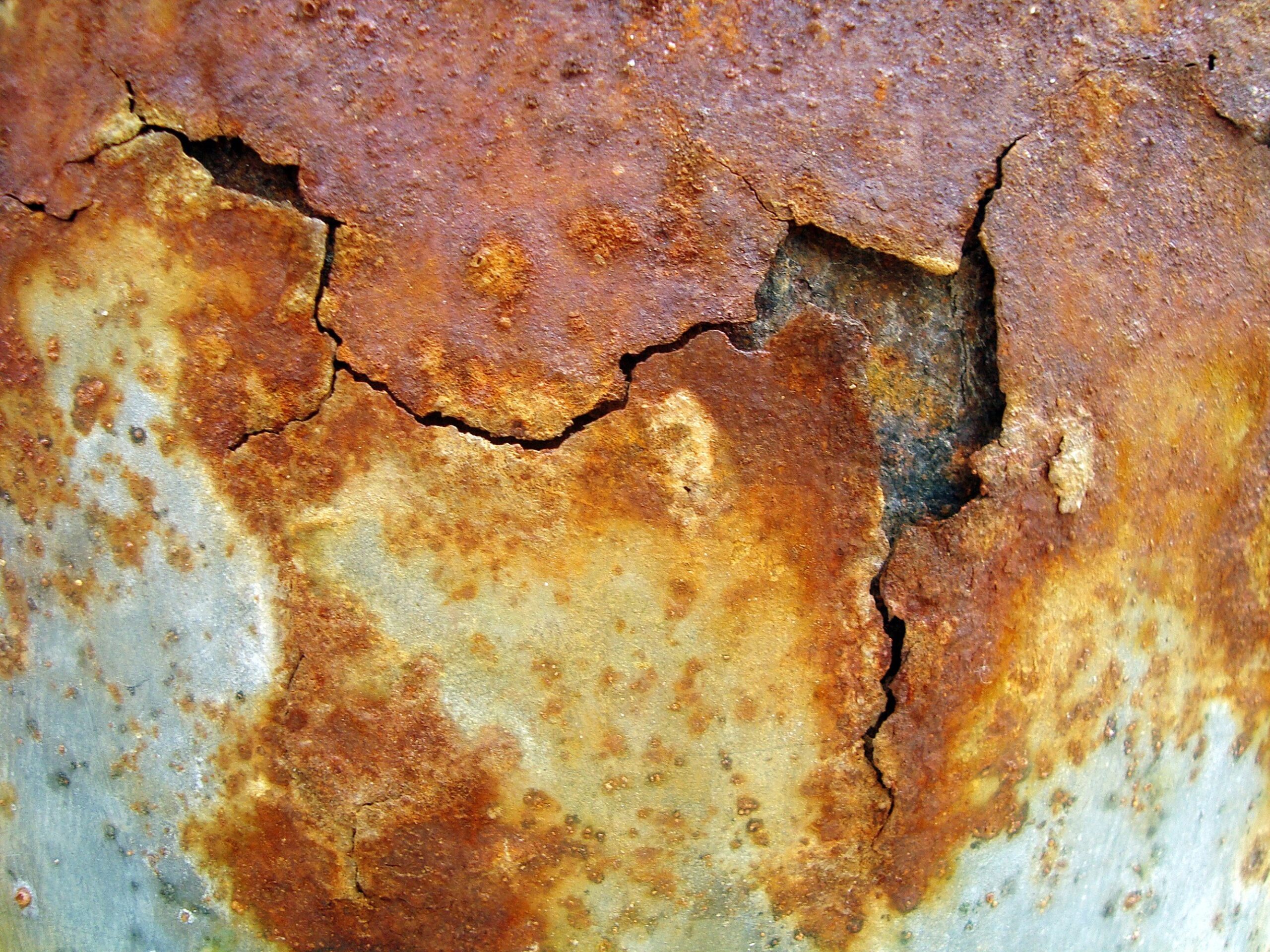Causing hundreds of billions of dollars in losses each year, corrosion is a very common yet serious problem across different industries and environments. One thing to note is that corrosion can be intensified and accelerated by the presence of high temperatures, high relative humidity, salt air, harsh chemicals, and even by mold, moss and dirt deposits.
Since corrosion control and prevention measures can widely depend on certain variables, we’ve decided to create a series of four blog posts to present some essentials a business professional should consider when dealing with corrosion. 
In this post, we’re going to talk about the five most common types of corrosion typically occurring in Jacksonville, Tampa and other coastal locations across Florida.
1. Galvanic Corrosion
Galvanic corrosion, or bimetallic corrosion as sometimes called, occurs when two electrochemically dissimilar metals are joined together, via a conductive path, and exposed to an electrolyte (e.g. natural sea water).
In the galvanic couple, one metal becomes the anode and corrodes faster than the other metal, which becomes the cathode and deteriorates more slowly. Galvanic corrosion is most serious for buried or immersed structures.
2. Stress-Corrosion Cracking
When metal components are exposed to tensile stresses, hairline cracks may develop in coatings. Once a coating system is breached, the bare metal will be subjected to corrosive elements.
Prolonged exposure of metals to a corrosive environment can lead to extensive damage and even unexpected failure. To prevent excessive corrosion, the condition of coatings systems and metal components should be evaluated by an experienced commercial paint contractor on a regular basis.
3. Metal Corrosion Due to Corrosive Substances
This form of corrosion happens when coatings and metals are exposed to corrosives. After damaging the coating system, corrosives can attack and corrode metals, including equipment pieces, installations, containers, silos and building components.
The rate of corrosion is greater when the temperature increases, when the environment contains high amounts of corrosives, or when corrosives are very strong.
4. General Corrosion
Also referred to as uniform corrosion, general corrosion is caused by a chemical or electro-chemical reaction and affects the entire surface of a metal component.
Although general corrosion can deteriorate metals to the point of failure, it’s one of the “safest” forms. Because general corrosion is predictable, it’s very easy to prevent and control it. This will help increase the lifespan of different metal components and structures, as well as reduce paint maintenance and replacement costs.
5. Localized Corrosion
This type of corrosion occurs when one small area of a metal structure or component is exposed to specific corrosion-causing stresses. Localized corrosion is further divided into:
– Pitting, which is caused by a localized galvanic reaction and appears as one or more small cavities that continue deep into the metal.
– Crevice Corrosion, which occurs in confined spaces (e.g. areas under washers or gaskets; the space between pipes and insulation materials; etc.) where oxygen cannot circulate freely and vapors, mold or dirt builds up.
– Filiform Corrosion, which is one of the most dangerous types of corrosion. Filiform corrosion is a form of crevice corrosion, in which moisture or acidic conditions permeate the coating system. Since this type of corrosion can spread under the surface coating, it can lead to metal weakness and failure.
One way to protect your metal components and structures against corrosion is to hire the right industrial and commercial paint contractor. The professionals working at Performance Painting Contractors, for instance, have the knowledge, expertise and capabilities to choose and apply corrosion resistance coatings in order to protect different metal components extensively exposed to a variety of environments.






